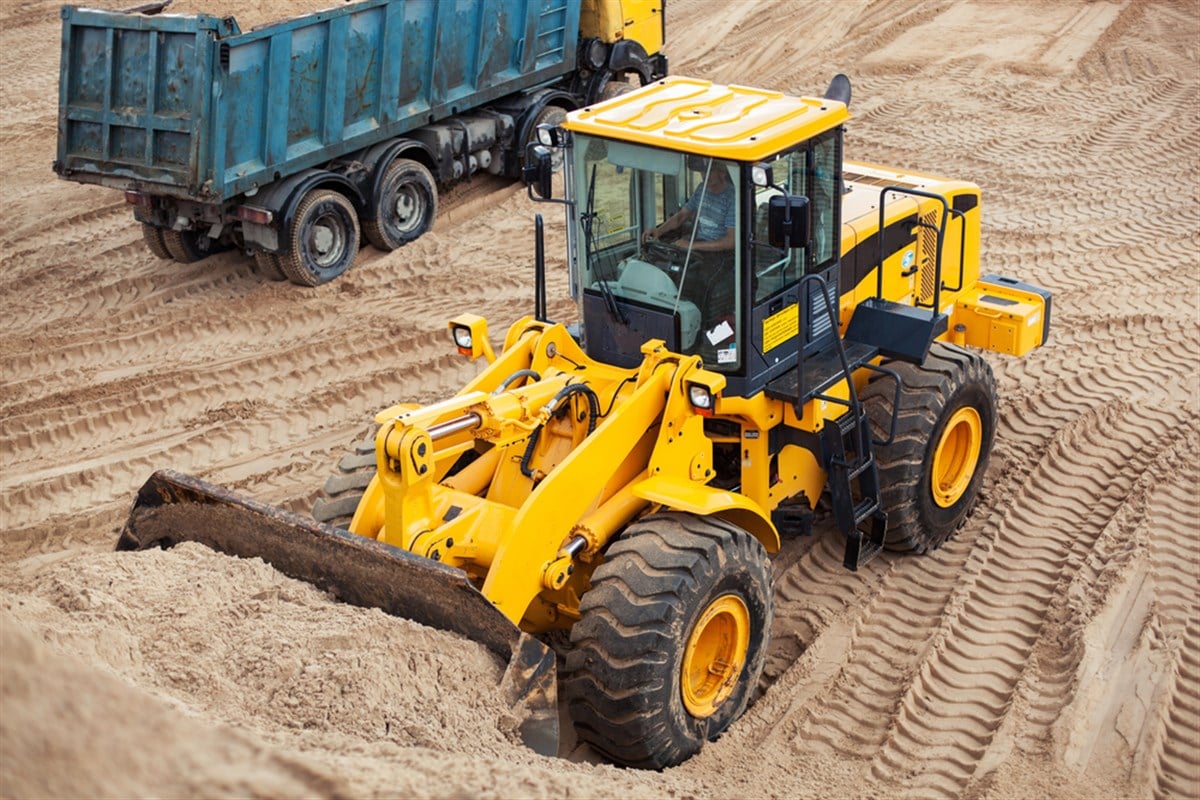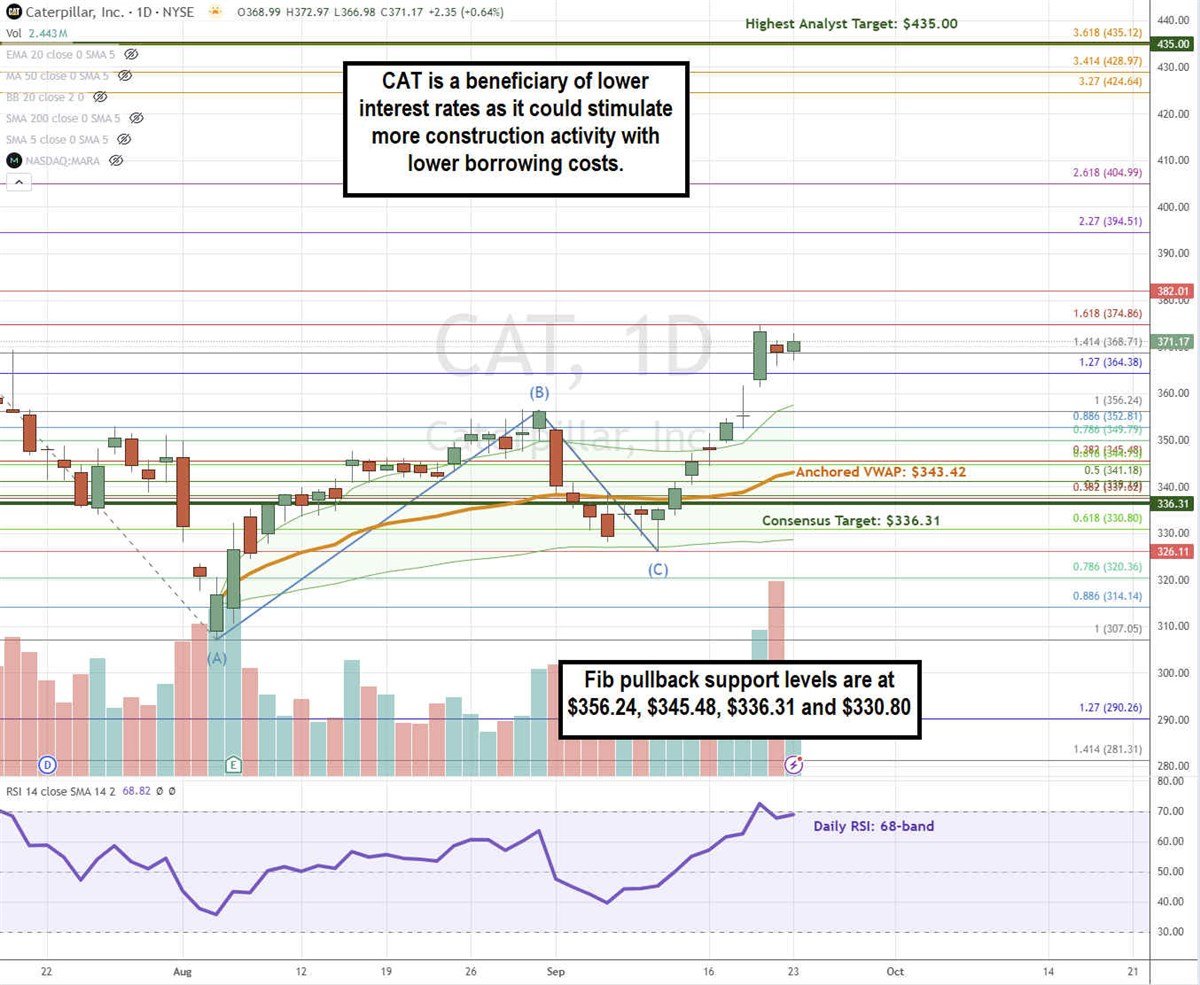
Caterpillar Inc. (NYSE: CAT) is the leading manufacturer of heavy machinery, equipment, and vehicles for construction and mining. It operates in the industrial products sector, competing with heavy machinery makers Deer & Co. (NYSE: DE), CNH Industrial N.V. (NYSE: CNH), and Terex Co. (NYSE: TEX).
Caterpillar has been a barometer of the health of the global economy. Economic expansion periods see more construction activity as demand for Caterpillar's products rises. Contracting economies show the opposite, as Caterpillar's equipment is in less demand. Caterpillar stock is trading up 35.4% year-to-date (YTD). While it may seem expensive, here are four reasons that can power its next leg higher through all-time highs.
1) The Interest Rate Cut Cycle Can Stimulate Construction Activity
The U.S. Federal Reserve cut interest rates by 50 bps for the first time in two years, likely starting a new interest rate cut cycle. Lower interest rates can lead to lower financing and borrowing costs, stimulating more construction activity. Lower interest rates make companies finance Caterpillar's expensive machinery more affordable. More construction spending is a boon for Caterpillar as its products increase demand. Investors often use Caterpillar stock as an inflation hedge.
2) The CAT Dynamic Energy Transfer (DET) System
Caterpillar unveiled its original equipment manufacturer (OEM), which designed a sustainable technology solution for dynamic charging for both battery and diesel-electric large mining trucks while they are operating. The Caterpillar Dynamic Energy Transfer (DET) system can charge a machine's battery while operating with improved efficiency and increased speed on grade. Dynamic charging drastically reduces the need for heavy-duty trucks to stop and recharge, which results in more uptime, efficiency and productivity. This can be a game changer and a growth driver.
3) Infrastructure Spending Boom
The nation’s infrastructure continues to age and requires upkeep and repair. The Bipartisan Infrastructure Deal that President Biden signed authorizes 2026 nearly $1.2 trillion in spending for critical infrastructure needs in the United States. Poor conditions are apparent for one out of every five miles of major roads and highways in the country, and 45,000 bridges are in need of repair. The law allocates $110 billion in additional funding to repair and rebuild the most economically significant bridges and thousands of smaller bridges throughout the country. Funds are also allocated for airports, waterways, ports, and public transit. All of these require the use of major construction machinery, and Caterpillar is their go-to provider.
4) CAT Stock Formed an A-B-C Pattern
An ABC pattern is a harmonic pattern comprised of three points: A is the low to B, and the high to C is the 0.382 to 0.618 pullback. The extension's initial target is 1.62, but it can continue up to 3.618.

CAT formed the A point at $307.05, bounced to the B point of $356.24, and retraced to the C of $326.11. The upside 1.618 target hit on the nose at $374.86. A pullback may ensue, or CAT can continue its upward momentum toward the highest consensus price target at $435.00. The daily relative strength index (RSI) is bounced to the 68-band. Fibonacci (Fib) pullback support levels are at $356.24, $345.48, $336.31, and $330.80.
Caterpillar’s average consensus price target is $336.31, and its highest analyst price target is $435.00.
Bullish investors can consider using cash-secured puts at the Anchored VWAP, Consensus Target, or Fib pullback support levels to buy the dip. If assigned the shares, writing a covered call at upside Fib levels executes a wheel strategy for income in addition to the 1.52% annual dividend yield.

